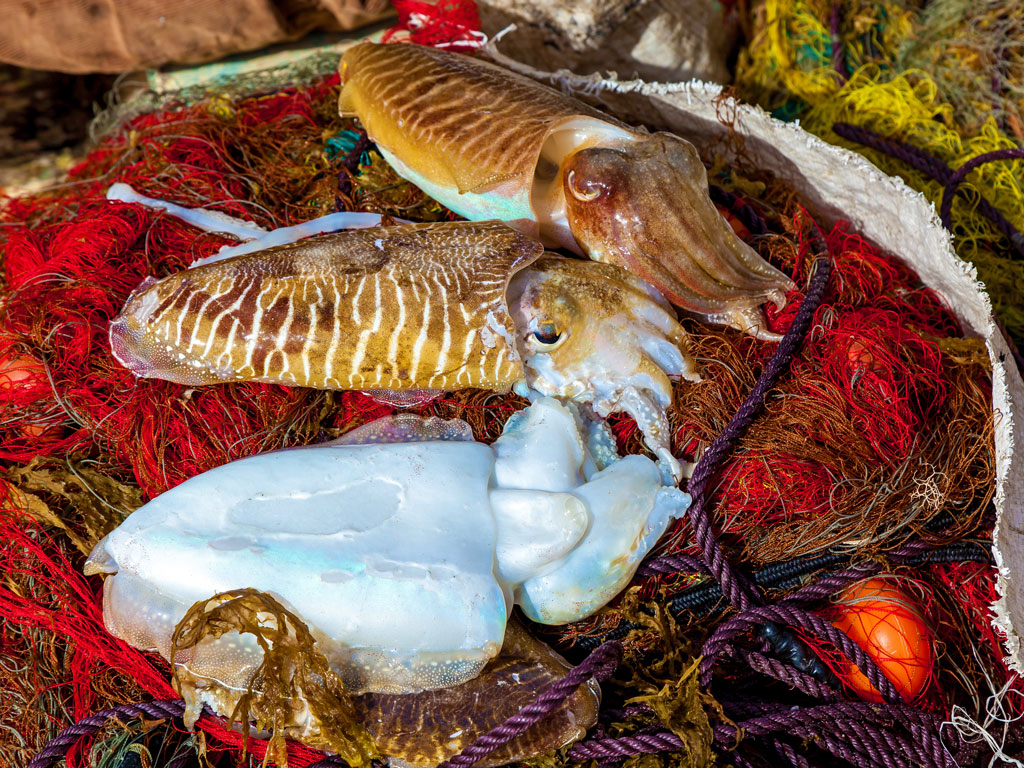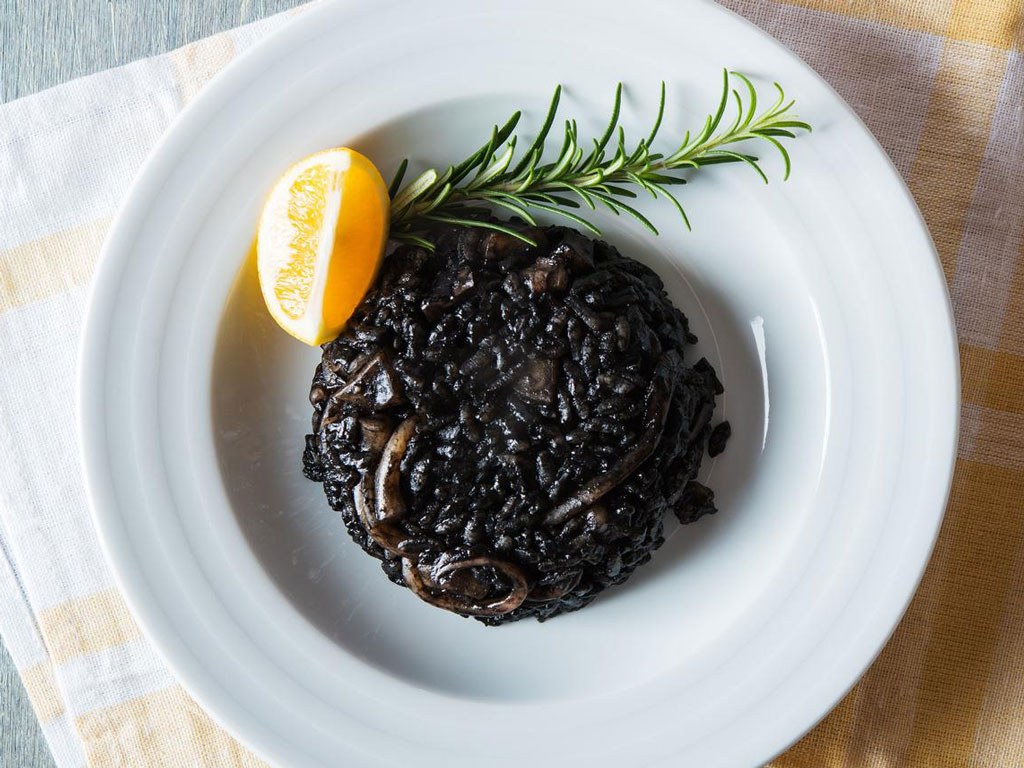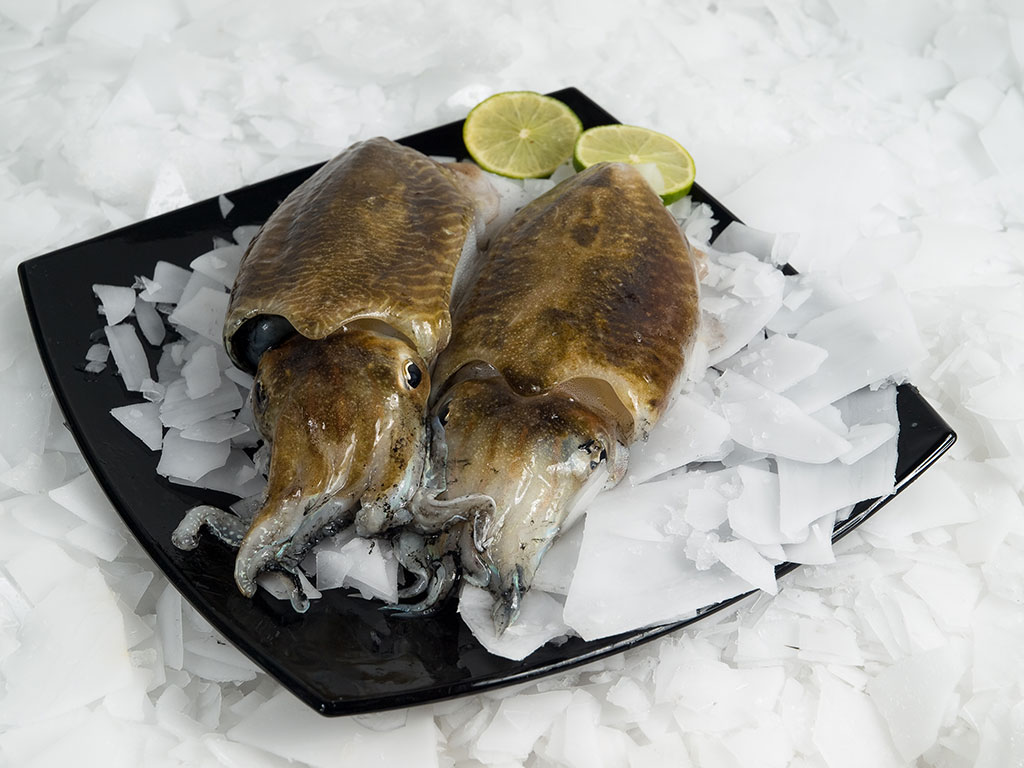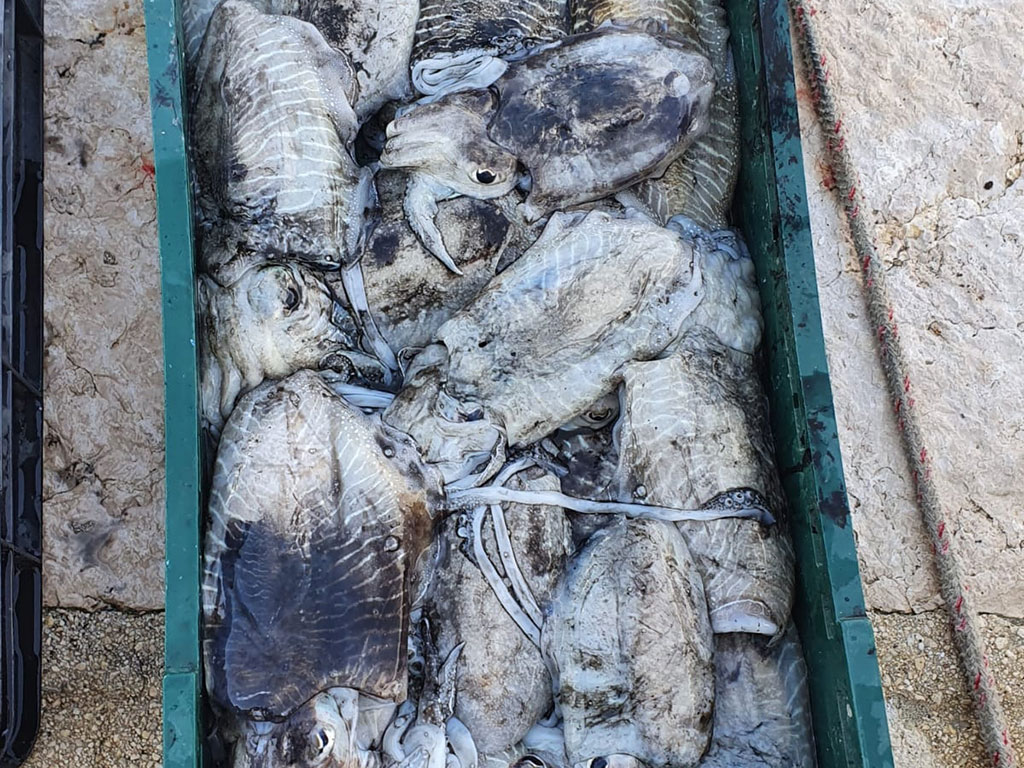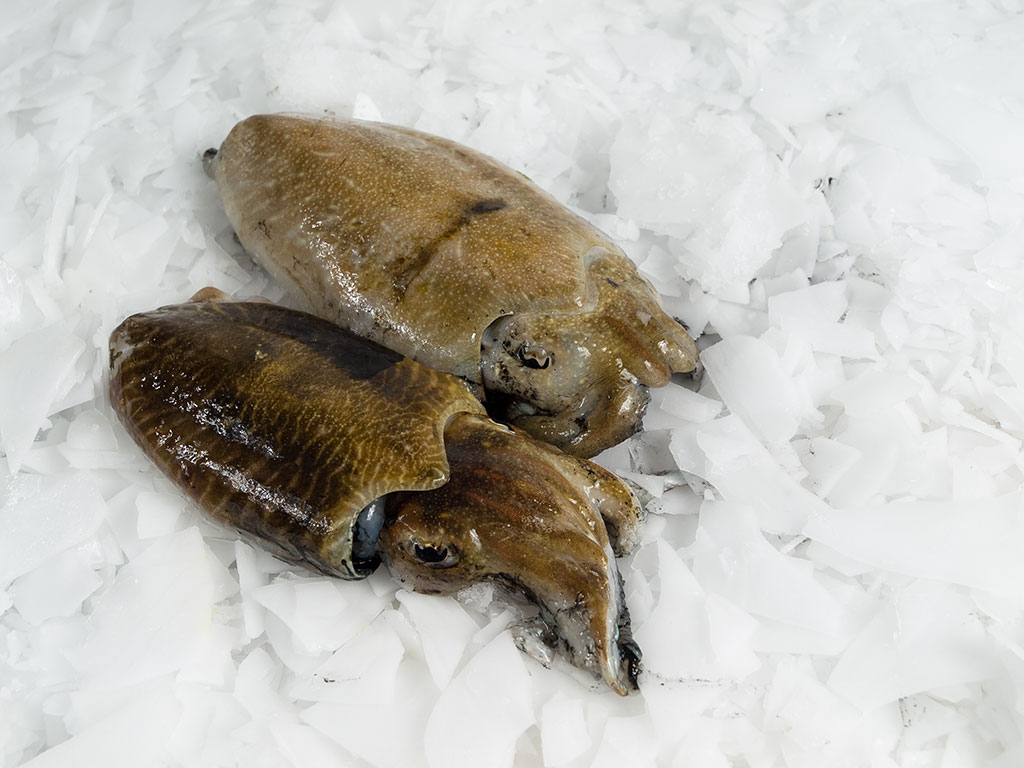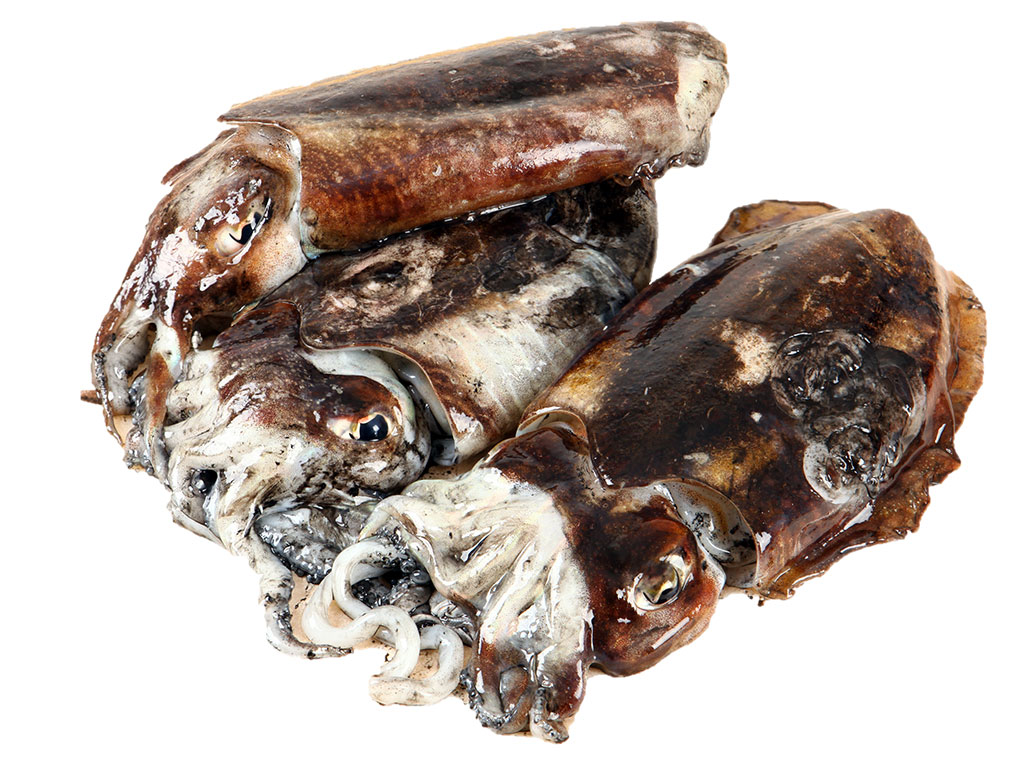
Cuttlefish
lat. Sepia officinalis
Cuttlefish
Our common cuttlefish (Sepia officinalis) grows up to 60 cm and it weights slightly over 3 kg. It lives in the Mediterrannean and east Atlantic and it can greatly be found in all European coastal countries. Due to its unusal appearance they were always cosidered mythical creatures and they resemble only squids. Cephalopods are in its appearance very unique as they are a special branch of the evolution.
Cuttlefish has three hearts and each has a separate role. Two serve to bring oxygen from the gills while the third serves to supply tissue with the blood. The blood of cuttlefish is free of hemoglobin that is substituted with hemocyanin which uses cooper based proteins. For this reason its blood is dark velvet and not red as in most creatures (this is true for all the cepalophods).
Due to the use of cooper protein instead of iron in the blood, its blood has to circulate faster to compensate for the poor oxygen binding to the ”copper” protein.
Energy value of 100g of fresh cuttlefish is 72 kcal/301 kj of what 0.8% are carbohydrates, 1.4 % is fat and 14% proteins.
Like many seafood, cuttlefish is rich in vitamin B and others: vitamins A and C, niacin, riboflavin , B6 and 12, folic acid, calcium, magnesium, iron, phosphorus, potassium, natrium, zinc, copper, manganese and selenium.
Cutllefish is also rich in many unsaturated fats such as eicosapentaneoic and docosahexaonic acid that play an important role in reducing the risk of heart disease by normalizing high blood preasure, lowering tryglicerides in the bloodstream, preventing blood clots and arteries clogging.



